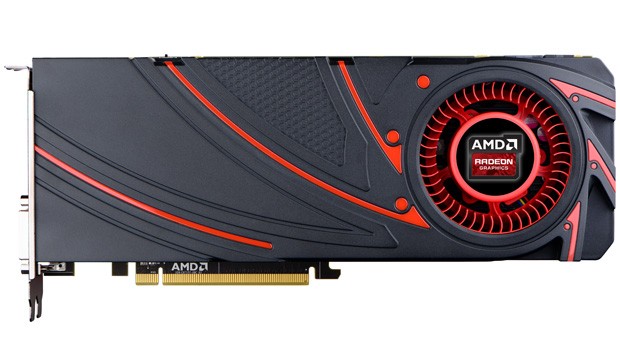Sapphire Releases Performance-boosting BIOS for its R9-290
Sapphire has released a performance-enhancing BIOS for its R9-290 graphics cards, and given us the announcement that we've all been waiting for.
The Radeon R9-290 and Radeon R9-290X graphics cards have become known for being very powerful, though very loud as well. One of the key characteristics of the graphics cards is the way that their thermals, fan speeds and clock speeds are managed. Since the graphics cards stock coolers are not powerful enough by default to run the card at full speed, AMD's PowerTune technology will dynamically turn down the GPUs clock speed to prevent the GPU from overheating.
Previously, the default maximum fan speed that the cards operated at was 40 percent. While this still stands for the R9-290X, to give the R9-290 a performance boost, AMD had released a driver update to get the fan running at 47 percent. Now, Sapphire has done the same thing for its own R9-290, however, rather than releasing it in the form of a driver, it has released a new BIOS for the graphics card. While in practice you're unlikely to notice a difference between a driver fix or a BIOS fix, it is somewhat reassuring knowing that it is now hardcoded into the BIOS, and not ran as an override.
Furthermore, while no details were provided, Sapphire has announced that in the coming weeks it will be coming out with various different R9-290 graphics cards built on its own designs, with better cooling solutions. If you're in the market for an R9-290 card, you're probably better off waiting for custom cards to come out, unless you don't mind the hassle of slapping a big Arctic Accelero Xtreme III cooler onto it.
Get Tom's Hardware's best news and in-depth reviews, straight to your inbox.
Niels Broekhuijsen is a Contributing Writer for Tom's Hardware US. He reviews cases, water cooling and pc builds.
-
UVB076 I think AMD really shot themselves in the foot by not just letting the board partners make custom coolers, their stock coolers are honestly quite crap.Reply -
InvalidError It would not take much to substantially increase AMD's reference cooler's efficiency: simply rotate the fan's blade 5-10 degrees counter-clockwise.Reply
The way they are on the reference fan, each blade is scooping up air in a direction perpendicular to rotation and flat in the wake of the next blade in front. Maximum noise, minimum airflow. The slight blade angle change deflects the wake outwards and bites into incoming air on the inner edge. Quieter with better airflow. -
danwat1234 Or here's an idea, allow the fan to reach 100% RPM in certain scenarios. It's sad that the GPU clocks down, reducing computation before the fan even reaches 50% speed.Reply -
InvalidError Reply
An horribly flawed fan design running at 100% would be horribly noisy and not necessarily provide much extra airflow.12039448 said:Or here's an idea, allow the fan to reach 100% RPM in certain scenarios.
-
eklipz330 the most obvious flaw with these blower type coolers is that since the fan is only exhausting in one direction over useful components, it is LITERALLY half as effective as it should beReply -
danwat1234 Reply
Well you have a point there if turbulence just increases instead of increased CFM? But if it does increase air flow significantly then I think it should be an option. Power to the people12039564 said:
An horribly flawed fan design running at 100% would be horribly noisy and not necessarily provide much extra airflow.12039448 said:Or here's an idea, allow the fan to reach 100% RPM in certain scenarios.
-
InvalidError Reply
My bet is that noise would ramp up much faster than CFM does, which would be consistent with complaints about how quickly noise ramps up for little to no apparent cooling gain.12039677 said:Well you have a point there if turbulence just increases instead of increased CFM? -
lunyone I would have put on a better stock fan and released it to the media first and let them know that the stock cooler is being re-worked for better cooling efficiency. This way you release a better quality cooler to the reviewers and have a bit of time to get all of your stock coolers re-done. But how it is right now the stock cooler is crap for these cards and it affects the noise and general impressions.Reply -
ingtar33 amd really released a dynamite gpu... i mean the benching results of the r9-290x under water show it's just as fast as the 780ti at the same clocks... and it seems to hit roughly the same top end as the 780ti (1300-1400) under water. So we're talking about what should be the top gpu on the market... or atleast tied as the best gpu on the market, and they handicap it with a worthless gpu cooler and call it a feature!!Reply
Seriously sometimes i think AMD likes to shoot itself in the foot just for the fun of it. -
m32 As soon as the aftermarket coolers come, the r9 290(x) will remove the "hot" label it has. The cooler just sucks! It isn't enough to keep it cool and it is loud. At least we have the 'peace of mind' that the gpu core can handle 95c that it will never see when the partners get it right.Reply

